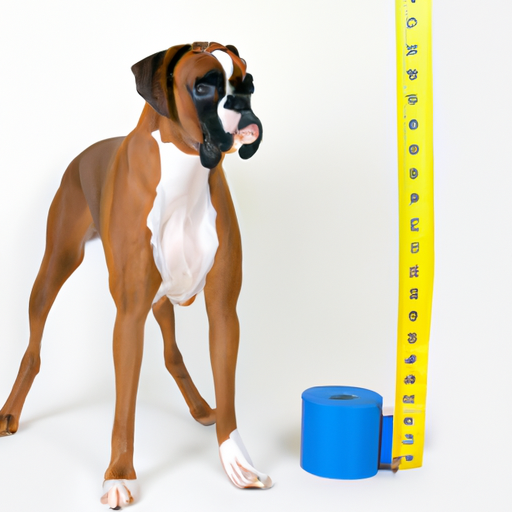Boxer dogs are known for their muscular build, playful nature, and distinctive ‘boxy’ face. But when it comes to their size, there’s a bit of variation. Whether you’re considering adopting a boxer or you just want to learn more about this popular breed, this guide will give you everything you need to know about their size, growth stages, and factors affecting their size.
Table of Contents
- Understanding Boxer Size: Puppies to Adults
- Factors Affecting a Boxer’s Size
- Size Differences Between Male and Female Boxers
- How to Determine if Your Boxer is the Right Size
- Frequently Asked Questions
Key Takeaways
- Boxer puppies are born quite small but grow rapidly in the first few months.
- Adult male boxers are typically larger than females.
- Boxer’s size is influenced by genetics, diet, and exercise.
- It’s important to monitor your boxer’s weight and size to ensure they’re healthy.
Understanding Boxer Size: Puppies to Adults
Boxer dogs start as small puppies, growing rapidly in the first few months. At birth, boxer puppies typically weigh between 0.5 and 0.7 pounds. But don’t let this petite size fool you. They’ll soon start to grow rapidly. By the time they’re seven weeks old, they can weigh up to 11 pounds, and at six months, a boxer puppy can weigh as much as 56 pounds.
By the time a boxer reaches adulthood at about 15 months, they’re pretty much fully grown. Male boxers usually stand between 23 and 25 inches tall at the shoulder and weigh between 65 and 80 pounds. Female boxers are slightly smaller, at 21.5 to 23.5 inches tall and weighing between 50 and 65 pounds.
Here’s a table showing the average growth of boxers:
| Age | Male Boxer Weight (lbs) | Female Boxer Weight (lbs) |
|---|---|---|
| Birth | 0.5 – 0.7 | 0.5 – 0.7 |
| 7 weeks | 11 | 10 |
| 6 months | 56 | 50 |
| 15 months (adult) | 65 – 80 | 50 – 65 |
Factors Affecting a Boxer’s Size
Just like humans, a boxer’s size is affected by several factors, the most significant being genetics. If your boxer’s parents were large, your boxer is likely to be large as well. On the flip side, if they were on the smaller side, expect a smaller adult boxer.
Diet and exercise also play a critical role in a boxer’s size. A healthy, balanced diet contributes to steady growth, while sufficient exercise ensures your boxer maintains a healthy weight. This article on OneTopDog provides a comprehensive guide on the best diet for boxers.
Size Differences Between Male and Female Boxers
As mentioned earlier, there is a noticeable size difference between male and female boxers. Males are typically larger, both in terms of weight and height. However, the personality and temperament of the dog do not significantly differ based on their size or gender.
How to Determine if Your Boxer is the Right Size
Determining if your boxer is the right size involves more than just comparing their weight and height to the breed’s average. You also need to consider their overall body condition.
A healthy boxer should not be too thin or too heavy. You should be able to feel their ribs but not see them. Their waist should be easily identifiable, and they should have a noticeable tuck-up (where the belly curves up towards the back).
If you’re unsure about your boxer’s size or weight, consult your vet. They can assess your dog’s body condition and provide advice on diet and exercise. For tips on keeping your boxer fit and healthy, check out this insightful article on OneTopDog.
Frequently Asked Questions
1. How big will my Boxer puppy get?
Your Boxer puppy’s adult size will depend on several factors, including their gender and the size of their parents. On average, expect male Boxers to reach 65 to 80 pounds and 23 to 25 inches tall. Females typically grow to 50 to 65 pounds and 21.5 to 23.5 inches tall.
2. When do Boxers stop growing?
Boxers typically reach their full height by the age of one year but may continue filling out and gaining muscle until they’re 18 months old.
3. How can I ensure my Boxer is a healthy weight?
Ensure your Boxer is getting a balanced diet and plenty of exercise. Regular check-ups with your vet are also important to monitor your Boxer’s weight and overall health.
4. Are there differences in size between Boxer breeds?
While there can be slight variations in size among different lines of Boxers, the breed standard is relatively consistent. Any major deviations in size might indicate mixed breed ancestry.
By now, you should have a comprehensive understanding of the size of boxers, factors that influence their size, and how to ensure they maintain a healthy weight. Still, have questions? OneTopDog offers a wealth of information on this breed. Whether you’re interested in Boxer training tips or need advice on Boxer health issues, we’ve got you covered.



